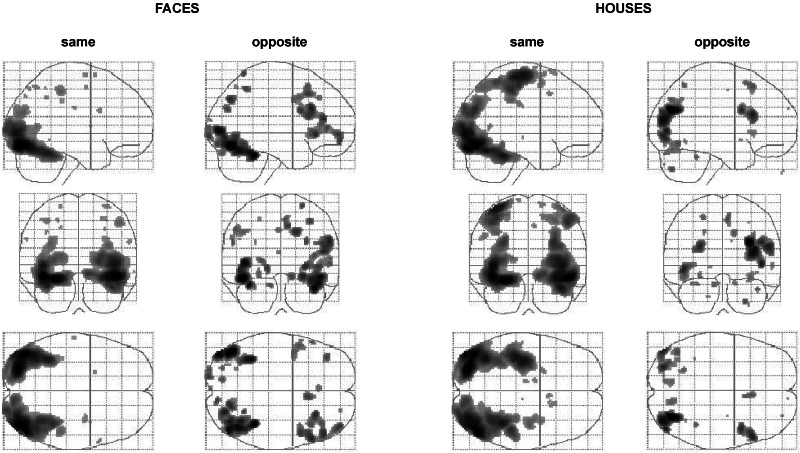Figure 2.
Glass-brain presentations of group results of the activation produced by the opposite and same dichoptic stimulation with pictures of faces and houses (compared with that produced by their corresponding control). Large regions of binocularly driven prestriate visual areas are activated even when the two monocular stimuli cancel each other out at the binocular level, resulting in an identical and null percept in the two opposite stimulations (opposite face/house-opposite control) that is the same as that of the control. The brain regions activated by the opposite stimulation also are much the same as those activated by the same stimulation but are less extensive. With the same houses, there is also activity in the motor cortex, which might be caused by the fact that the button-press of the subjects (to report house) was made by the third finger and thus was more difficult than the other two.

